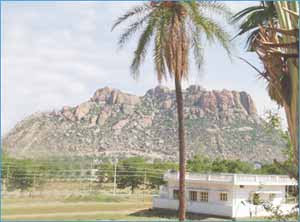A
Dream
society
characterized
by
the
commercialization of
emotions
As society gets wealthy and it becomes easier to satisfy material needs, people
increasingly focus on immaterial or emotional needs. Rather than consuming
more material goods as wealth increases, people instead increasingly consume
immaterial goods or material goods with a large immaterial content. Stories and
emotions then become a large part of what they consume, and people increasingly
favor products with built-in emotions or stories. This is the Dream Society logic
[Jensen, 1999], characterized by the commercialization of emotions, where
purely immaterial products or services can satisfy emotional needs.
Precisely because of this, once basic survival needs have been satisfied, people
start focusing more on their social needs. They want to gain acceptance and
recognition from the groups of people that they desire to be a part of [Marslow,
1943]. Hence they acquire products that are not strictly necessary for survival,
but are valued as status symbols in these groups of people, whether it is a local
community, a work community or a group of people with whom they share an
ideological or cultural identity. Such status symbols are not just valued by their
size but also by having the right qualities, such as being of a recognized brand or
made by a famous designer or telling a certain story about the owner.
These status symbols have an important role in the Dream Society’s logic. These
are things people don’t necessarily need, but which are used to tell something
about the consumer’s taste, identity and wealth. The Dream Society argues that
traditional market segmentations (where products and services are categorized
as food, transportation, clothes, entertainment, etc.) soon will be changed by
emotional markets segmentations. The Dream Society identifies six emotional
markets [Jensen, 1999]:
·
The market of adventures for sale (experiences and impressions).
·
The market of togetherness, friendship and love (human relations).
·
The market for care (the need to show caring).
·
The who-am-I market (the quest for personal identity).
·
The market for peace of mind (the safe and the familiar).
·
The market for convictions (values and opinions).
In fact, as empathy and emotion impact people’s lives (from work to social encounters
and personal relaxation, from food to interiors and fashion) understanding the
modern consumer is about digging into their emotional, spiritual and psychological
needs. Emotional consumption is foremost about people whose outlook on life
is focused on meaning rather than materialism. Anne Lise Kjaer [Kjaer, 2005]
mapped out four types of emotional consumption, identifying the key drivers
influencing future behavior and lifestyle patterns of most western consumers. The
four consumer trends that describe the advanced stage of self-realization that the
modern consumer has reached are [Kjaer, 2005]:
·
Future consumer is a seeker, a worker and an artist, choosing motivational
and emotionally rewarding priorities for both our work and personal lives (young
experimental perfection seekers [Fox, 2005]).
·
There is a renewed need for ritual and tradition. Traceability is essential as
every aspect involved in preparing a meal (the taste, the smell, the textures, the
sourcing of the ingredients, the cultural significance, and the emotional value).
·
Fair sourcing represents the first vital step towards building a new sustainable
world where ethics and eco-principles set the standard.
·
The inner quest towards purifying our mind, body and spirit.


























